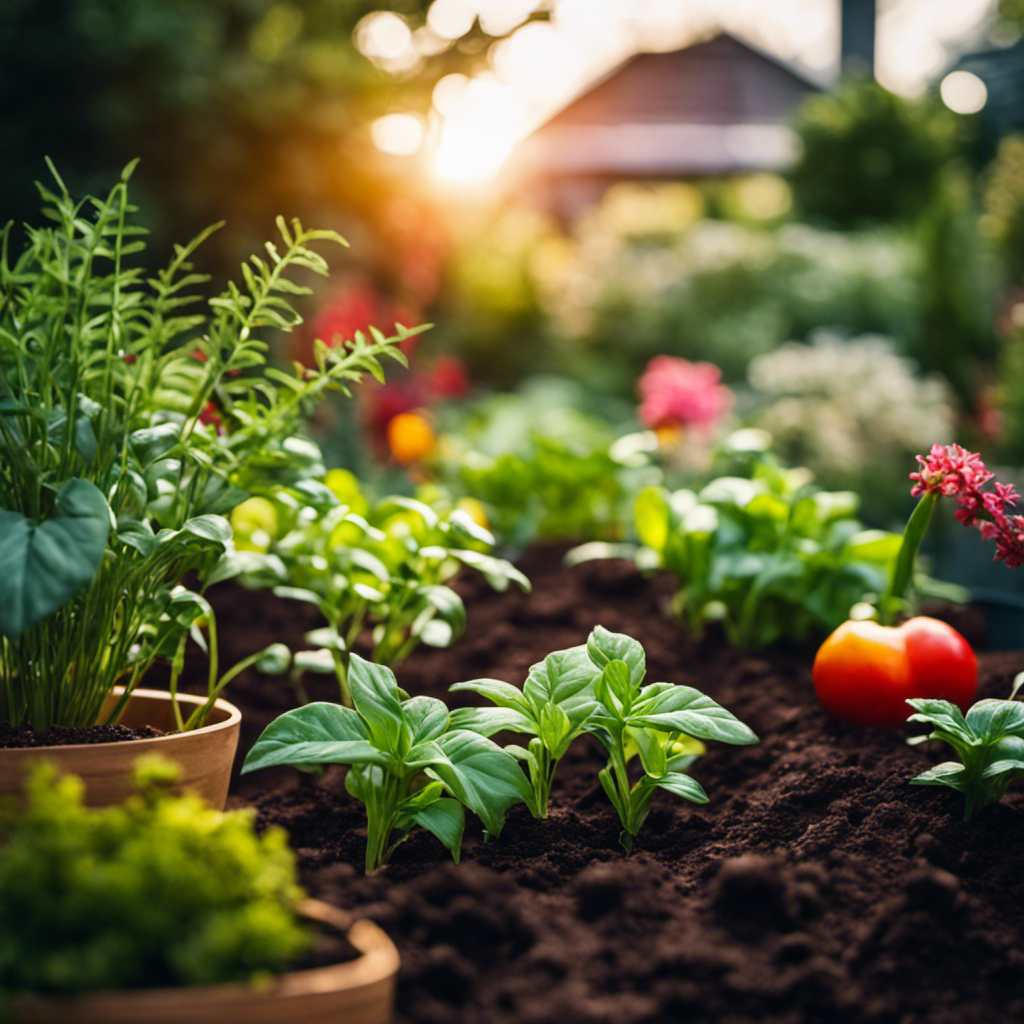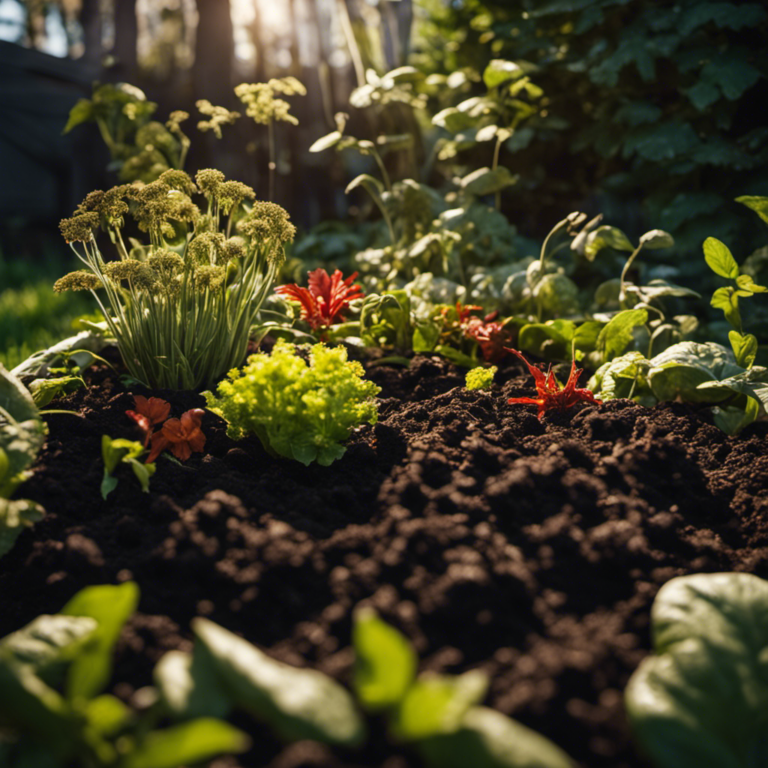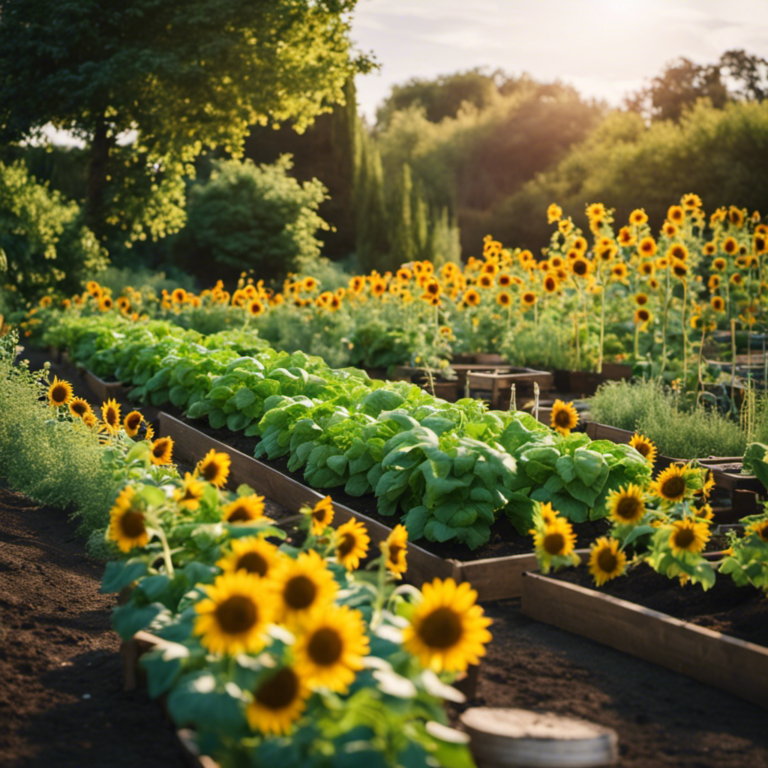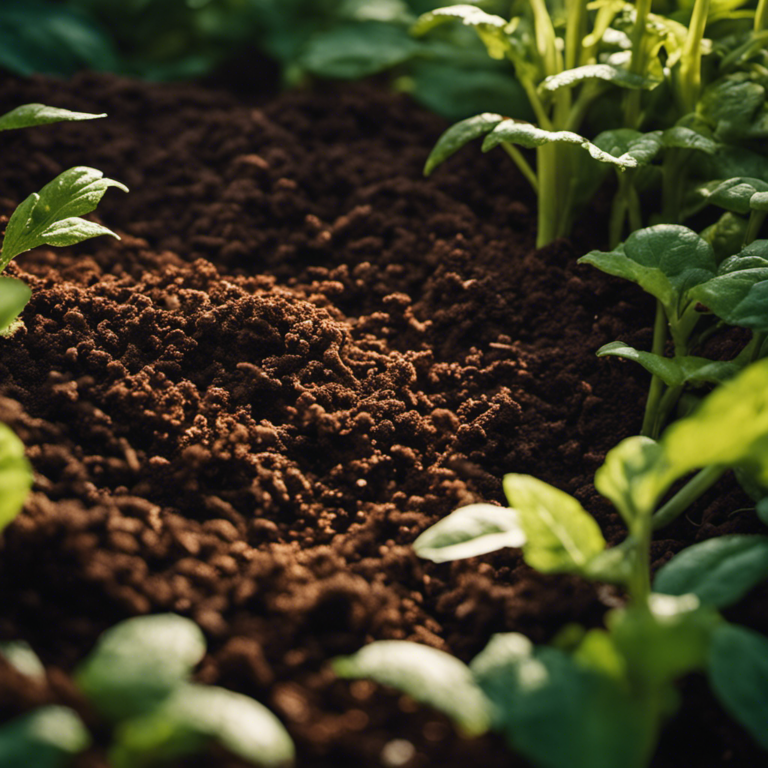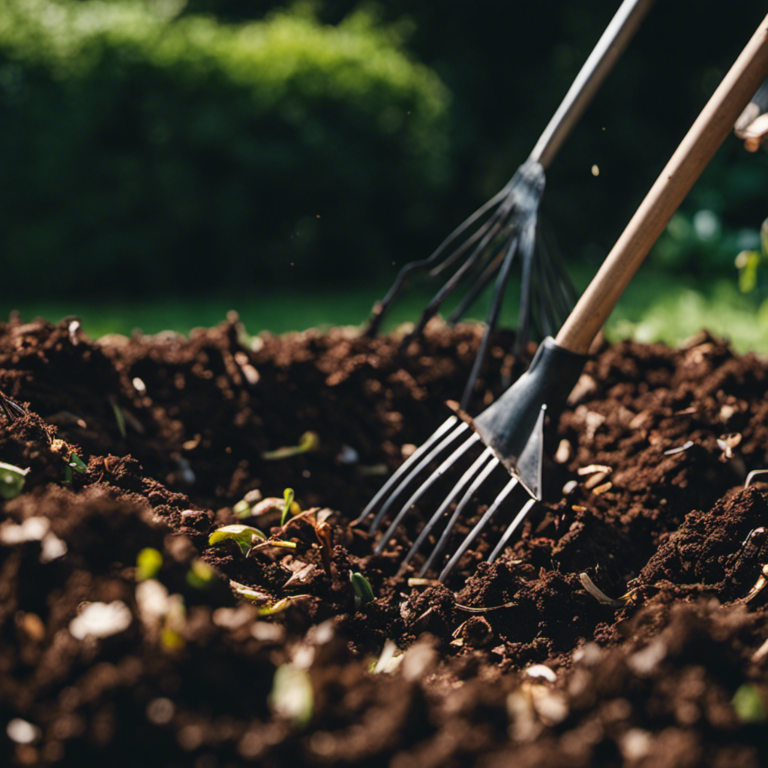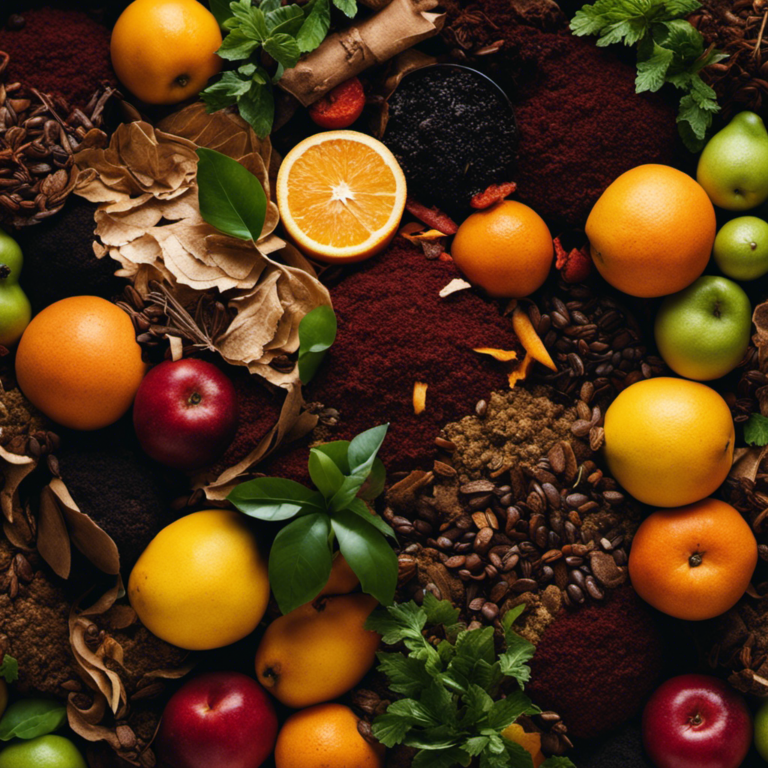Welcome! I’m here to help you explore the world of organic composting. Let’s roll up our sleeves and uncover the secrets to creating nutrient-rich soil for your garden.
In this article, we’ll discuss different composting methods, the essential tools you’ll need, and the best ingredients to ensure a successful pile.
I’ll also provide tips on maintaining a balanced compost and troubleshooting common issues.
So, let’s dive in and discover the beginner’s advantage of organic composting!
Key Takeaways
Organic composting offers many benefits for beginners who want to create a sustainable garden. By choosing the right composting method, using essential tools, and incorporating high-quality ingredients, you can maintain a well-balanced compost pile and overcome common challenges.
With patience and dedication, you’ll be able to produce nutrient-rich compost that nourishes your plants and contributes to the overall health of the environment.
As the saying goes, "In the garden of life, organic composting is the secret ingredient."
Choosing the Right Composting Method
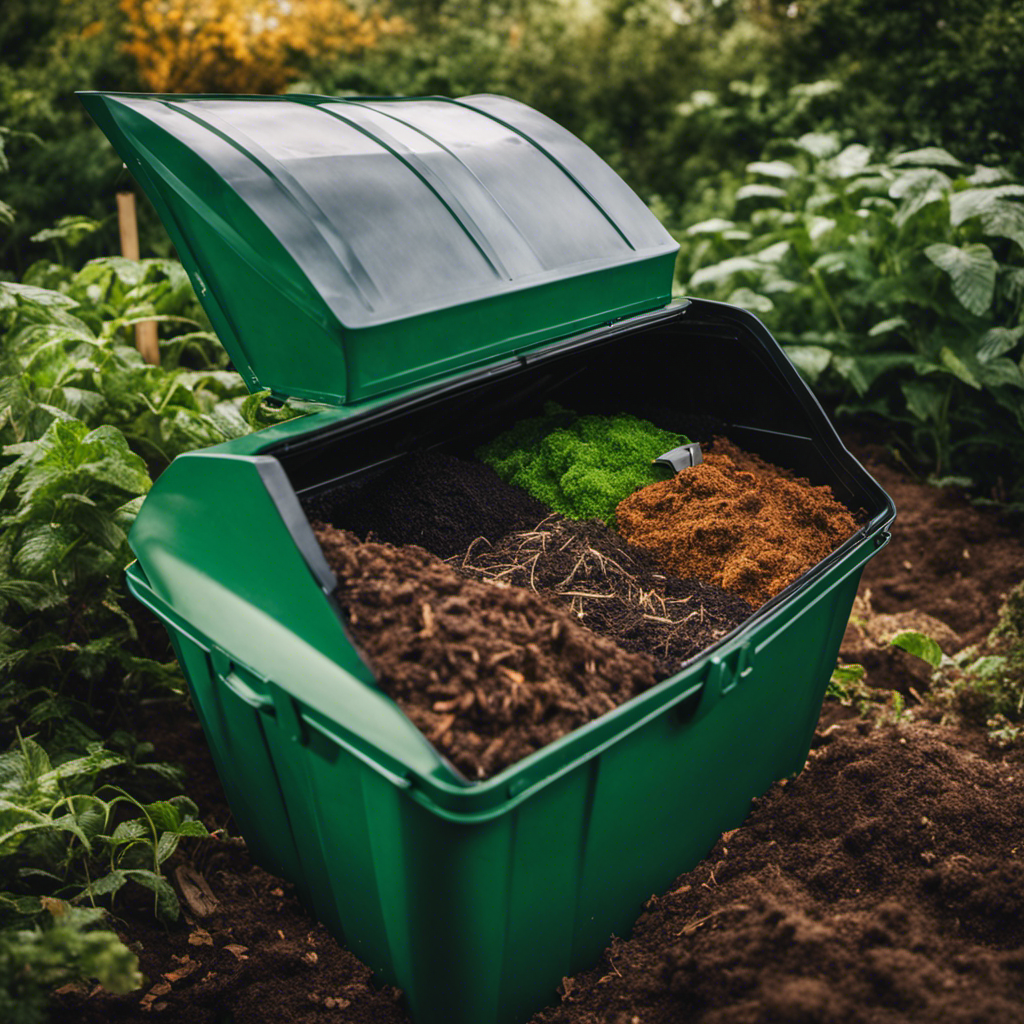
Choosing the Right Composting Method
When it comes to choosing the right composting method, there are a few factors to consider. One important factor is the amount of space you have available. Another factor is the type of organic waste you’ll be composting. By understanding the benefits of composting, you can make an informed decision that suits your needs.
For smaller spaces like apartments or urban gardens, indoor composting methods are ideal. Two popular methods are vermicomposting and bokashi composting. Vermicomposting involves using worms to break down organic waste and create nutrient-rich compost. It’s a great option for those with limited outdoor space. Bokashi composting, on the other hand, utilizes beneficial microbes to ferment organic waste. It’s a faster process and produces compost that can be directly applied to plants.
If you have a larger space and a substantial amount of organic waste, outdoor composting methods are more suitable. Traditional composting involves creating a compost pile and allowing it to decompose over time. You’ll need to turn the pile occasionally to ensure proper aeration. Another option is hot composting, which involves maintaining higher temperatures in the compost pile to speed up decomposition.
Choosing the right composting method is essential to maximize the benefits of composting. By considering the available space and the type of organic waste you have, you can select the most efficient method for your needs. Whether it’s indoor composting for small spaces or outdoor composting for larger ones, the end result is nutrient-rich compost that will nourish your plants and contribute to a more sustainable environment.
Essential Tools for Organic Composting

To begin composting organically, you’ll need a few essential tools. These tools will assist you in creating and maintaining a successful composting system.
Here are the five essential tools for organic composting:
-
Composting Bins: These containers are specifically designed for composting. They provide an optimal environment for the decomposition process, allowing organic materials to break down efficiently.
-
Composting Worms: Also known as red wigglers or earthworms, these worms play a crucial role in composting. They help break down organic matter by consuming it and converting it into nutrient-rich castings.
-
Pitchfork or Compost Turner: These tools are used to aerate the compost pile. Regularly turning the pile introduces oxygen, which accelerates the decomposition process.
-
Garden Gloves: It’s important to protect your hands while handling compost materials. Garden gloves will keep your hands clean and safe from any potential hazards.
-
Thermometer: Monitoring the temperature of the compost pile is essential. A compost thermometer allows you to ensure that the pile is heating up properly, promoting faster decomposition.
Best Ingredients for a Successful Compost
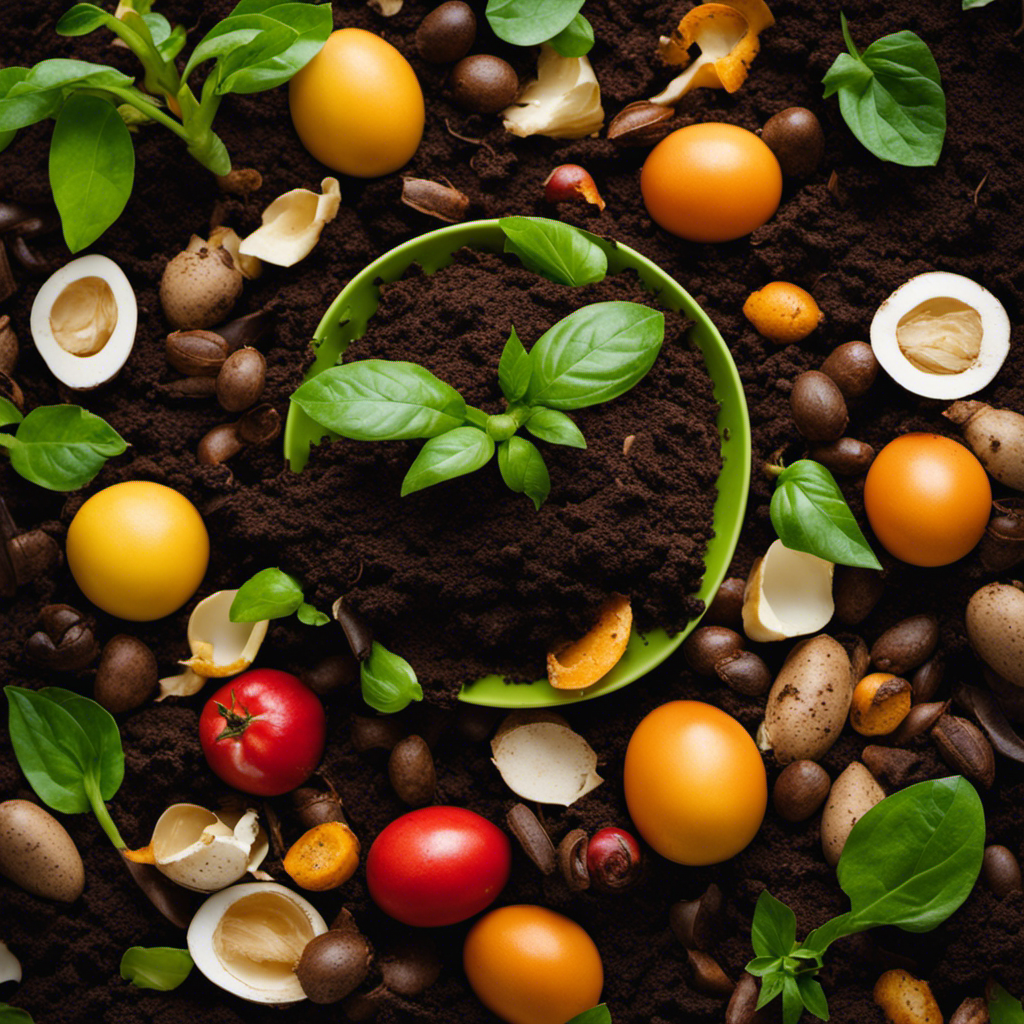
One important factor for creating a successful compost is to achieve a balanced mixture of organic materials. Composting techniques involve breaking down organic waste into nutrient-rich soil. By combining different types of organic materials in the right way, you can create a compost that’s rich in essential nutrients and beneficial microorganisms.
To achieve this balance, it’s crucial to include a variety of ingredients in your compost pile. This includes a mixture of ‘greens’ and ‘browns.’ Greens are materials that are rich in nitrogen, such as kitchen scraps, grass clippings, and fresh plant trimmings. Browns, on the other hand, are carbon-rich materials like dry leaves, straw, and wood chips.
Adding a diverse range of organic materials ensures that your compost has the right ratio of carbon to nitrogen. This balance is essential for creating an environment that supports the growth of beneficial microorganisms. These microorganisms break down the organic matter, transforming it into humus, which is a dark and nutrient-rich material that improves soil structure and fertility.
In addition to greens and browns, it’s recommended to include other compostable materials like eggshells, coffee grounds, and yard waste. These materials contribute important nutrients and help create a well-rounded compost.
There are numerous benefits to composting. It reduces the amount of waste sent to landfills, conserves water by improving soil moisture retention, reduces the need for synthetic fertilizers, and promotes healthy plant growth. By using the best ingredients for your compost, you can take advantage of these benefits and contribute to a more sustainable and eco-friendly environment.
Maintaining a Balanced Compost Pile
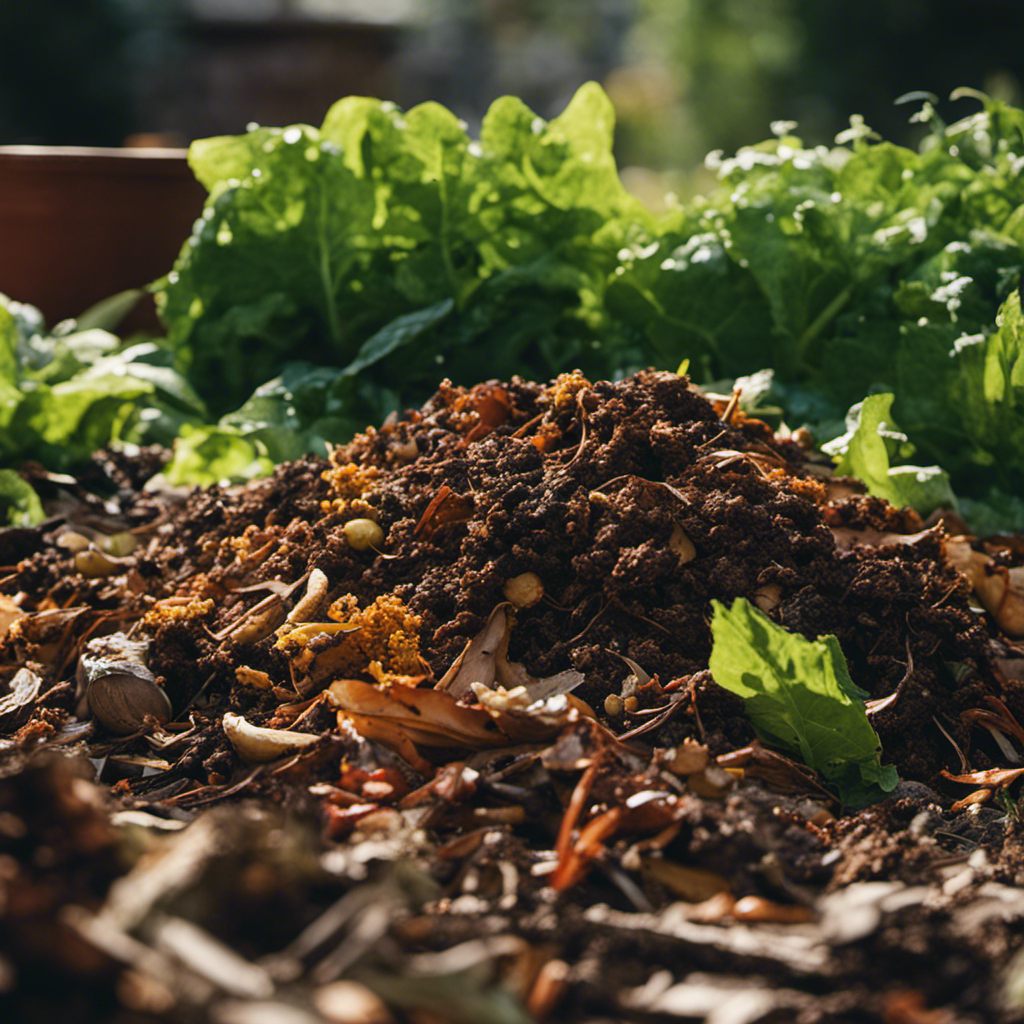
Maintaining a Balanced Compost Pile
To keep your compost pile in balance, it’s important to regularly monitor the moisture and temperature levels. This ensures that the microorganisms responsible for breaking down the organic matter are thriving and working efficiently. Here are five key factors to consider when maintaining a balanced compost pile:
Moisture: Keeping the compost pile moist, but not overly wet, is crucial. Aim for a moisture level similar to that of a wrung-out sponge. This helps the microorganisms thrive and speeds up the composting process.
Temperature: The ideal temperature range for composting is between 135°F and 160°F. Regularly check the temperature using a compost thermometer to ensure it stays within this range. If the temperature drops too low, the decomposition process may slow down.
Turning: Regularly turning the compost pile helps aerate it, providing oxygen to the microorganisms. This promotes faster decomposition and prevents the formation of unpleasant odors.
Carbon-to-nitrogen ratio: Maintaining a balanced ratio of carbon-rich brown materials (like dried leaves and straw) to nitrogen-rich green materials (like kitchen scraps and grass clippings) is essential for a healthy compost pile. Aim for a ratio of 25-30 parts carbon to 1 part nitrogen.
Vermicomposting: Consider adding worms to your compost pile for vermicomposting. These worms help break down the organic matter faster and create nutrient-rich worm castings, which can be used as a natural fertilizer.
Troubleshooting Common Composting Issues
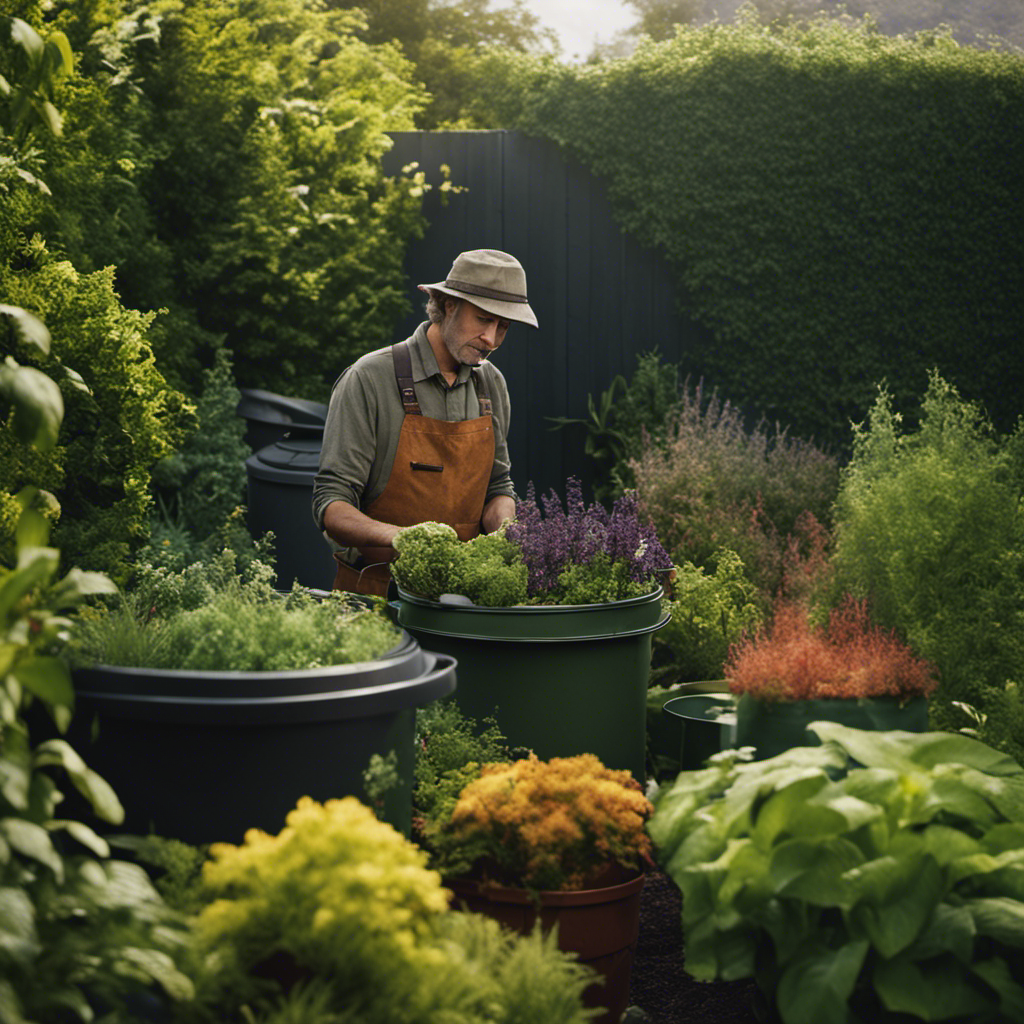
Common Issues in Composting and How to Troubleshoot Them
During my journey into organic composting, I came across several common problems that needed addressing. One of the most prevalent issues I faced was the unpleasant odor emanating from my compost pile. This smell is typically caused by an imbalance in the carbon-to-nitrogen ratio. To tackle this problem, I discovered the importance of adding carbon-rich materials like dry leaves or straw. These materials help absorb the excess nitrogen and reduce the odor.
Another challenge I encountered was the slow decomposition process. This can occur when the compost pile lacks moisture or when the materials are overly compacted. To speed up the decomposition, I made sure to maintain the right moisture level by regularly watering the pile. Additionally, I turned the compost frequently to allow for proper aeration and to loosen the materials.
Dealing with pests and rodents can also be a nuisance when composting. To address this issue, I learned to avoid adding meat, dairy, or oily food scraps, as they tend to attract unwanted critters. I also found it helpful to place a wire mesh or lid on top of the compost bin to keep pests out.
Lastly, I discovered that composting can sometimes attract flies. To mitigate this problem, I started covering the food scraps with a layer of carbon-rich material. Additionally, I made it a habit to turn the compost regularly, discouraging fly breeding.
Conclusion
Organic composting offers numerous benefits for beginners looking to cultivate a sustainable garden. By selecting the appropriate composting method, using essential tools, and incorporating high-quality ingredients, you can maintain a well-balanced compost pile and avoid common challenges.
With patience and dedication, you’ll be able to produce nutrient-rich compost that not only nourishes your plants but also contributes to the overall health of the environment.
As the old saying goes, ‘In the garden of life, organic composting is the secret ingredient.’
